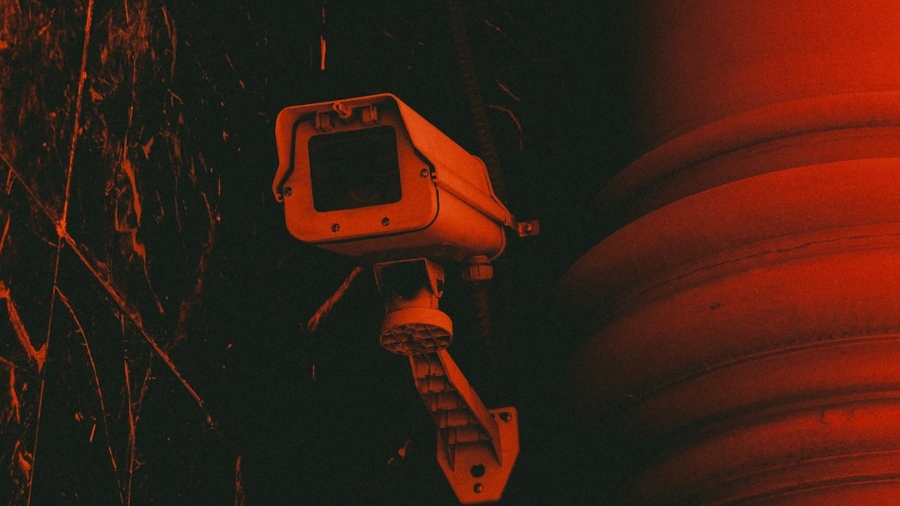The landscape of home security has undergone a significant transformation in recent years, largely due to the advent of artificial intelligence (AI) and predictive analytics. Traditional security systems, which primarily relied on alarms and surveillance cameras, are now being enhanced by sophisticated algorithms that can analyze vast amounts of data in real-time.
AI-driven predictive analytics can anticipate potential threats before they materialize, offering a proactive approach to home safety that was previously unimaginable. As the world becomes increasingly interconnected through the Internet of Things (IoT), the integration of AI into home security systems is not just a trend but a necessity. Homeowners are now equipped with tools that not only react to incidents but also predict them based on patterns and behaviors.
This capability is particularly crucial in an era where crime rates fluctuate and new threats emerge regularly. By harnessing the power of AI, homeowners can create a more secure environment, ensuring peace of mind while also optimizing their security investments.
Key Takeaways
- AI-driven predictive analytics play a crucial role in enhancing home security systems by leveraging advanced technology to predict and prevent potential security threats.
- Artificial intelligence enhances home security by analyzing data and patterns to identify potential risks and provide real-time insights for proactive security measures.
- The benefits of AI-driven predictive analytics for home security systems include improved threat detection, reduced false alarms, and enhanced overall security effectiveness.
- AI-driven predictive analytics improve intrusion detection and prevention by analyzing data from various sources to identify suspicious activities and potential security breaches.
- AI enhances video surveillance and monitoring in home security systems by enabling advanced features such as facial recognition, object detection, and real-time alerts for suspicious activities.
Understanding the Role of Artificial Intelligence in Enhancing Home Security
Artificial intelligence plays a pivotal role in modernizing home security systems by enabling them to learn from data and adapt to changing circumstances. At its core, AI utilizes machine learning algorithms that can process and analyze data from various sources, including sensors, cameras, and user interactions. This data-driven approach allows security systems to identify unusual patterns or behaviors that may indicate a potential security breach.
For instance, if a door sensor detects that a door is opened at an unusual hour, the system can flag this event for further investigation. Moreover, AI enhances the functionality of home security systems by enabling them to operate autonomously. With the ability to analyze historical data, AI can predict when a home is most vulnerable based on factors such as time of day, occupancy patterns, and even local crime statistics.
This predictive capability allows homeowners to take preemptive measures, such as adjusting their security settings or notifying law enforcement when necessary. The integration of AI not only improves the accuracy of threat detection but also reduces false alarms, which can be a significant nuisance for homeowners and law enforcement alike.
The Benefits of AI-Driven Predictive Analytics for Home Security Systems

The benefits of AI-driven predictive analytics in home security systems are manifold, significantly enhancing both safety and convenience for homeowners. One of the most notable advantages is the ability to provide real-time insights into potential threats. By continuously analyzing data from various sensors and cameras, these systems can alert homeowners to suspicious activities as they occur.
For example, if a motion sensor detects movement in an area where no one should be present, the system can immediately send an alert to the homeowner’s smartphone, allowing for swift action. Another significant benefit is the reduction of human error in monitoring security systems. Traditional security measures often rely on human operators to monitor feeds and respond to alerts, which can lead to oversight or delayed responses.
AI-driven systems automate this process, ensuring that no potential threat goes unnoticed. Additionally, these systems can learn from past incidents to improve their predictive capabilities over time. For instance, if a particular type of intrusion has occurred multiple times in a neighborhood, the system can adjust its algorithms to be more sensitive to similar patterns in the future.
How AI-Driven Predictive Analytics Improve Intrusion Detection and Prevention
Intrusion detection and prevention are critical components of any home security system, and AI-driven predictive analytics significantly enhance these functions. Traditional intrusion detection systems often rely on predefined rules or thresholds that may not account for the complexities of real-world scenarios. In contrast, AI algorithms can analyze behavioral patterns and environmental factors to identify potential intrusions more accurately.
For example, an AI system might recognize that a person walking through a yard at night is not necessarily a threat if they are carrying groceries but could flag unusual behavior if they linger near windows or doors. Furthermore, AI-driven systems can utilize advanced techniques such as anomaly detection to identify deviations from normal behavior. This capability allows for more nuanced responses to potential threats.
For instance, if a homeowner typically leaves for work at 8 AM but suddenly does not leave on a particular day, the system can assess this anomaly against other data points—such as whether doors were left unlocked or if there were any unusual movements detected around the property. By correlating these data points, the system can determine whether to alert the homeowner or take further action.
The Role of AI in Enhancing Video Surveillance and Monitoring in Home Security Systems
Video surveillance has long been a cornerstone of home security systems, but the integration of AI has revolutionized how video feeds are monitored and analyzed. Traditional surveillance systems often require constant human oversight to identify suspicious activities, which is both labor-intensive and prone to error. AI-driven video analytics can automatically process video feeds in real-time, identifying unusual behaviors or events without human intervention.
For example, an AI system can be trained to recognize specific actions—such as someone attempting to break into a window—and alert homeowners or law enforcement immediately. Moreover, AI enhances video surveillance by enabling features such as facial recognition and object detection. These capabilities allow homeowners to receive alerts when unfamiliar individuals are detected on their property or when specific objects—like vehicles or packages—are identified.
This level of specificity not only improves security but also provides valuable insights into daily activities around the home. For instance, if a package is delivered while the homeowner is away, the system can notify them and even provide video evidence if someone attempts to tamper with it.
Leveraging AI-Driven Predictive Analytics for Smart Access Control and Authentication

Access control is another critical area where AI-driven predictive analytics can significantly enhance home security systems. Traditional access control methods often rely on physical keys or codes that can be easily lost or compromised. In contrast, AI-powered access control systems utilize biometric authentication methods—such as fingerprint or facial recognition—to ensure that only authorized individuals can enter a property.
This technology not only increases security but also streamlines access for family members and trusted visitors. Additionally, AI-driven predictive analytics can monitor access patterns over time to identify potential vulnerabilities or unauthorized attempts at entry. For example, if an individual attempts to access a home using an incorrect code multiple times, the system can flag this behavior as suspicious and alert the homeowner or lock down access temporarily.
This proactive approach helps prevent unauthorized access before it occurs rather than merely responding after an incident has taken place.
Integrating AI-Driven Predictive Analytics with Smart Home Automation for Enhanced Security
The integration of AI-driven predictive analytics with smart home automation creates a synergistic effect that enhances overall security while improving convenience for homeowners. Smart home devices—such as smart locks, lights, and thermostats—can be programmed to respond automatically based on data analyzed by AI algorithms. For instance, if an AI system detects that no one is home during typical hours, it can automatically lock doors, turn off lights, and activate security cameras.
Moreover, this integration allows for more sophisticated responses to potential threats. If an intrusion is detected while homeowners are away, the system could trigger smart lights to flash on and off while simultaneously notifying law enforcement. This multi-faceted response not only deters intruders but also provides peace of mind for homeowners who may be concerned about their property while traveling or at work.
The Future of AI-Driven Predictive Analytics in Home Security Systems
As technology continues to evolve at an unprecedented pace, the future of AI-driven predictive analytics in home security systems looks promising. Emerging technologies such as 5G connectivity will enable faster data transmission and more robust real-time analytics capabilities. This advancement will allow for even more sophisticated algorithms that can process larger datasets from various sources—ranging from social media trends to local crime reports—enhancing predictive capabilities further.
Additionally, as machine learning models become more refined through continuous training on diverse datasets, we can expect even greater accuracy in threat detection and response strategies. Future systems may incorporate advanced features such as emotional recognition through video feeds or environmental sensing that adjusts security protocols based on weather conditions or neighborhood activity levels. The convergence of these technologies will create an ecosystem where home security is not just reactive but anticipatory—empowering homeowners with tools that ensure their safety in an increasingly complex world.
In conclusion, the integration of AI-driven predictive analytics into home security systems represents a significant leap forward in safeguarding our homes and families. By leveraging advanced technologies that analyze data in real-time and adapt to changing circumstances, homeowners can enjoy enhanced protection against potential threats while benefiting from increased convenience and peace of mind. As we look ahead, it is clear that the future of home security will be defined by innovation and intelligence—transforming how we think about safety in our everyday lives.
In a related article, com/smartwatches-huawei-review/’>Smartwatches Huawei Review, the latest advancements in wearable technology are explored, highlighting the features and capabilities of Huawei smartwatches.
These devices offer a range of functionalities, from fitness tracking to notifications and more, showcasing how technology continues to evolve and enhance our daily lives. Just as AI-driven predictive analytics are revolutionizing home security systems, smartwatches are transforming the way we interact with technology on a personal level.
FAQs
What is AI-driven predictive analytics in the context of home security systems?
AI-driven predictive analytics in home security systems involves the use of artificial intelligence to analyze data and predict potential security threats or breaches. This technology can identify patterns and anomalies in data to anticipate and prevent security incidents.
How does AI-driven predictive analytics enhance home security systems?
AI-driven predictive analytics enhances home security systems by providing proactive threat detection and prevention. It can analyze data from various sources such as security cameras, sensors, and smart devices to identify potential security risks and take preemptive measures to mitigate them.
What are the benefits of using AI-driven predictive analytics in home security systems?
Some benefits of using AI-driven predictive analytics in home security systems include improved accuracy in threat detection, reduced false alarms, proactive security measures, and the ability to adapt to evolving security threats. This technology can also provide homeowners with peace of mind and a greater sense of security.
How does AI-driven predictive analytics differ from traditional home security systems?
Traditional home security systems rely on reactive measures such as alarms and notifications when a security breach occurs. AI-driven predictive analytics, on the other hand, can anticipate and prevent security incidents before they occur by analyzing data and identifying potential threats in real-time.
What are some examples of AI-driven predictive analytics in home security systems?
Examples of AI-driven predictive analytics in home security systems include the use of machine learning algorithms to analyze security camera footage and detect suspicious behavior, the integration of smart sensors to monitor and predict potential security breaches, and the use of predictive modeling to anticipate security threats based on historical data.

